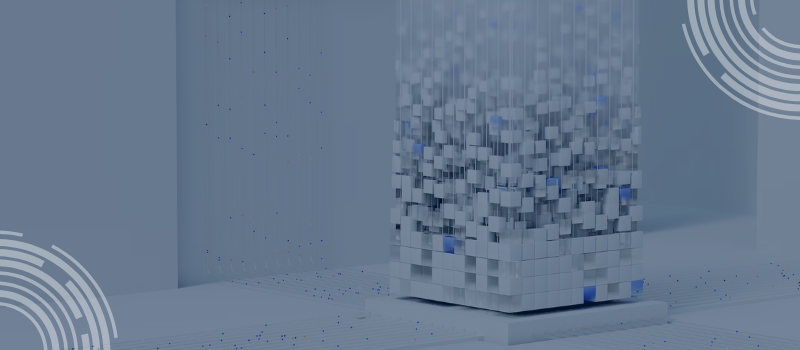
Published on December 5, 2023 - 00:00
GPU for artificial intelligence: Teraflops and CUDA
GPUs have been one of the key factors that have enabled the disruptive development of artificial intelligence in recent years: they are used to process large amounts of data, which is necessary for industrial automation and machine vision applications. In essence, these are highly specialized processors that can perform intensive and parallel calculations very quickly and, at the same time, handle a large amount of data.
The use of GPUs has allowed AI developers to create much more complex and efficient artificial neural networks, significantly more advanced than traditional processors. This has led to rapid progress in the learning speed and performance of artificial intelligence, opening up new possibilities for industrial automation.
Let's discover together the latest news regarding embedded PCs for artificial intelligence, talking about the most innovative GPU processors in terms of Teraflops and CUDA.
CPU vs GPU: The Differences Between the Two Processors
To understand the technological evolution that has led to the development of modern AI solutions, it is essential to know the differences between CPU (Central Processing Unit) and GPU (Graphics Processing Unit): two types of processors that operate in different ways.
Typically, the CPU is the main component of a PC and manages input processing, data storage and workflow control. A CPU is equipped with a few cores, each highly specialized in different operations: for this reason, a standard CPU is able to perform a few tasks but quickly and precisely.
On the other hand, the GPU can perform a large number of tasks simultaneously: it has many cores specialized in different calculation modes and can manage large amounts of data in parallel. In the past, GPUs have been used to process images and video graphics, but with the advent of deep learning they are taking on a crucial role for AI.
Today, in fact, there are GPUs for AI equipped with high efficiency in the parallel processing of large data sets, significantly improving performance compared to traditional CPUs and accelerating the calculation operations to manage artificial intelligence processes.
Teraflops for high computing power
To evaluate the computing power of GPUs, a measurement system called FLOPS is used, an acronym for Floating Point Operations per Second: this value indicates the number of mathematical operations per second that the processor is able to perform.
The most modern hardware on the market uses Teraflops or TFLOPS, a parameter that indicates 10¹² floating point operations per second: GPU cards with high Teraflops power are among the most advanced on the market and allow for exceptional performance, suitable for managing massive amounts of data in the AI field.
In fact, the more FLOPS a GPU has, the greater its computing capacity: computer systems equipped with Teraflops and high-speed VRAM memories can therefore achieve very high levels of performance and efficiency in parallel data processing, necessary for the functioning of AI deep learning and machine vision applications.
CUDA: Programming Technology for AI
Among the most innovative GPU programming technologies, we find NVIDIA's proposal for managing AI applications: CUDA, an acronym for Compute Unified Device Architecture. This system was a true revolution in the IT field because it allowed to fully exploit the potential of GPUs, which are already much more efficient than CPUs.
The CUDA framework provides developers with specific sets of instructions for parallel programming, libraries of optimized features and development tools to simplify the development of AI applications through a standardized interface.
NVIDIA's CUDA GPUs can be programmed as different processors that work in parallel, allowing to reach very high computational power and create complex and efficient applications. Thanks to this, in recent years AI engineers have been able to make great progress in the field of artificial intelligence.
Embedded PC with NVIDIA Jetson GPU
As a pioneer in the field of industrial automation, Digimax offers the most advanced hardware solutions for the development of software and applications with artificial intelligence. An example of these are the embedded PCs with integrated NVIDIA Jetson GPUs, designed for machine learning and computer vision systems.
Thanks to the partnerships with Advantech and AAEON, we can offer embedded PCs with the main NVIDIA Jetson GPU models for artificial intelligence, for example:
BOXER-8221-AI with Jetson Nano GPU: entry-level computer with low costs and sufficient performance for basic AI applications;
BOXER-8251AI with Jetson Xavier NX GPU: more powerful embedded PC capable of supporting more complex AI algorithms;
BOXER-8120AI with Jetson TX2 GPU: high-end device that offers exceptional performance for computer vision, speech recognition and advanced applications.
MIC-730AI-10A1 with Jetson AGX Xavier GPU: the most exclusive model with extremely high computing power and performance, ideal for demanding and complex applications.
The industrial PCs with NVIDIA GPUs offered by Digimax support the most common programming tools such as Tensor Flow, PyTorch and Caffe 2. Thanks to their high efficiency, they can also be used in environments with limited energy availability.
Ease of use, high flexibility and high performance: Digimax embedded PCs for AI can significantly accelerate the development of industrial automation applications, offering a complete and ready-to-use solution for processing complex data.